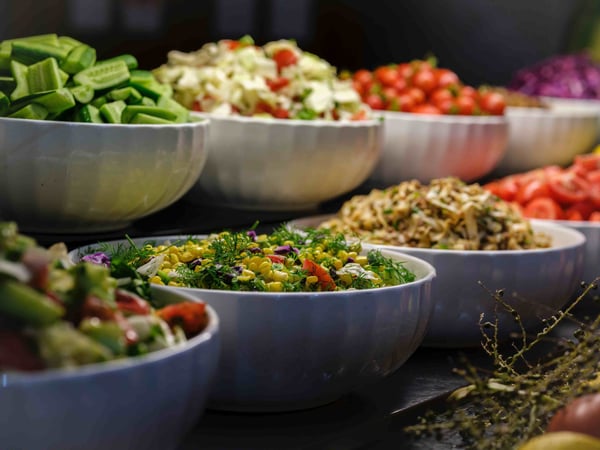In the preceding article, we explored the distinction between 'food waste' and 'food loss', wherein the key difference between the two lies in when the problem occurs along the food’s journey from farm to consumer. Food loss happens earlier in the supply chain, before food reaches consumers, whereas food waste occurs at the final stage of the supply chain.
Now, we embark on a deeper exploration of the realm of food waste by examining its various types which can be broken down to three as follows:
Avoidable food waste
Non-avoidable food waste
Partially avoidable food waste

Let's delve into how these three types of food waste differ from each other:
1. Avoidable food waste
Avoidable food waste is all food that is wasted while still fit for human consumption at some point before disposal. It refers to food items that could have been consumed if managed more effectively. Examples include leftovers from a meal, expired food, stale food, and blemished fruits and vegetables.
2022 statistics revealed that Malaysians produce 17,000 tonnes of food waste every day, of which 4,046 tonnes, or 24%, is avoidable food waste. This amount of avoidable food waste could actually feed three million people with three meals a day and this trend of food wastage would normally increase by 15%-20% during festive seasons.
Both households and commercial industries contribute significantly to the vast amount of avoidable food waste, influenced by various factors such as:
Insufficient awareness or knowledge regarding portion sizes
Limited cooking expertise or inefficient preparation methods
Over-purchasing or over-ordering in business environments
Uncertainty regarding best-before or sell-by dates
Inadequate food storage practices to prolong freshness

Photo credit: Ello
2. Partially avoidable food waste
This type of food waste includes food that some individuals consume while others discard. For instance, it may include remnants of consumption habits such as bread crusts, apple peels, or tough vegetable stalks.
Instead of throwing away the unwanted food parts, here are some ideas on how we can repurpose them:
i. Bread crusts:
Make breadcrumbs by drying and grinding them. Use these breadcrumbs for coating or topping dishes like casseroles, salads, or baked pasta.
Create croutons by cutting the crusts into cubes, tossing them with olive oil and seasonings, and baking until crispy. Croutons can be used to top soups, salads, or as a snack.
ii. Apple peels:
Infuse water or tea with apple peels to add flavor. Simply steep the peels in hot water or tea for a few minutes before straining and serving.
Make apple peel chips by baking them in the oven until crispy. Sprinkle with cinnamon or other spices for added flavor.
iii. Tough vegetable stalks:
Use them to make vegetable broth or stock. Simply simmer the stalks with other vegetable scraps, herbs, and water to create a flavorful base for soups, stews, or sauces.
Chop them finely and add them to dishes like stir-fries, soups, or salads for added texture and nutrition.

Photo credit: Maria Petersson
3. Non-avoidable food waste
Non-avoidable food waste corresponds to the portions of food that are not suitable for human consumption under normal circumstances (inedible parts), such as bones and eggshells, most of the fruit skins, teabags and more.
Is there nothing we can do to reduce the impact on the planet by discarding all this unavoidable food waste? Absolutely not!
A considerable amount of food waste in this category can be composted or recycled, which helps diminish the emission of methane, a potent greenhouse gas. Composting at home is a simple yet effective way to turn food scraps into nutrient-rich soil for gardening.
To start composting, collect fruit and vegetable scraps, coffee grounds, eggshells, and yard waste in a compost bin or pile. Mix the materials occasionally and keep them moist. Over time, these organic materials will decompose, creating compost that can be used to nourish your plants and reduce waste sent to landfills.
Source:

